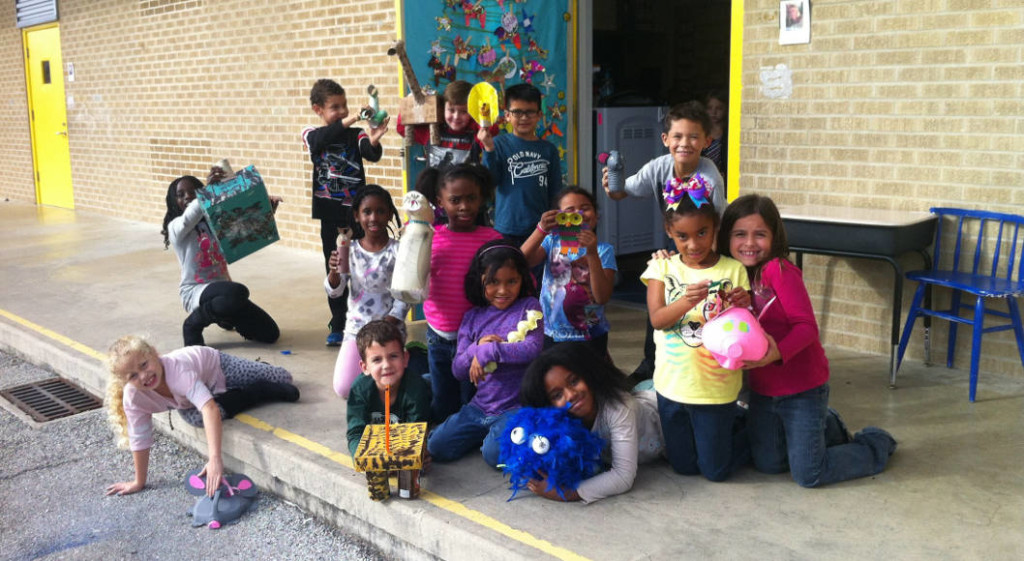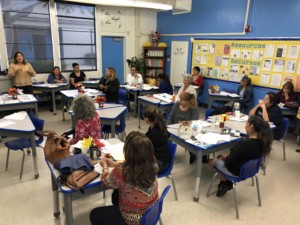Parent-Teacher Communication in a Multilingual School District

Feature image courtesy of Fort Sam Houston Elementary School
By Dr. Melanie Morgan
According to the National Center for Education Statistics, U.S. public schools are adding as many as 100,000 new ELL students each year, so today’s teachers need to be prepared to communicate with ELL students and their parents.
I teach at Fort Sam Houston Elementary School, which is located on a military base in Texas. ELL students and families are very common at this school, because the military here has an exchange program with the surrounding nations, where military personnel can trade places with other personnel around the globe. The children of these foreign officers attend our school on the base, and as a result we have taught students from Germany, Mexico, Australia and South America.

This is a very important program and, as teachers, we want to help these families with their transitions. Our particular situation at Fort Sam Houston Elementary may be unique, but the challenge of teaching non-native English speakers is one that more and more educators can relate to every year.
The non-English speaking families of our students have the same desires as native English speakers to know how their child is doing academically, emotionally and socially. Here’s how I help them stay connected to our school.
Coping with the Language Barrier in the Classroom
This year I had a student from Peru, and neither the student or her mother knew English. I communicated with this student by having another student, who can speak English fluently, listen to the Peruvian child and translate for me in English. Unfortunately, my translator understood Spanish but couldn’t speak it, so she couldn’t respond to the Peruvian student in Spanish–but even having one-way communication helped ease some of the frustration.
Other tactics we use to bridge this gap within the classroom are music and visual aids. Songs can help ELLs learn context for vocabulary, while the melody helps the words stick in their minds with greater ease. Repeating a catchy song that’s stuck in their head means they are practicing language skills without even realizing it.

When teaching ELL students, visuals are also very helpful, especially since I don’t speak Spanish. My Peruvian student and I played a sort of game where I would hold up an object while saying both the English and Spanish words for it. Though these tactics are incredibly useful when communicating with kindergarteners, they aren’t quite adequate when engaging in more detailed communications with the families of these students.
Communicating with Non-English Speaking Parents
In my efforts to communicate clearly with the parents of my ELL students, I’ve first tried to find a translator the parent(s) trusted, such as a colleague of mine who can speak the appropriate language to translate between us. For instance, an employee in our technology department helped me communicate with a parent who spoke only Russian. With my Peruvian family, I had more colleagues available who spoke Spanish, but there are still different styles of Spanish, especially in Texas where there’s “Tex-Mex” as opposed to the more formal Castilian. It required a great deal of time to locate these individuals and find a mutual meeting time in order to translate newsletters, send a text message or even three-way call for something as basic as transportation changes.
I’ve also used visuals and online translators to communicate with these families. I usually provided my messages in both our languages, as I felt that would be instrumental in helping the parents learn English. I had prior notice of my little boy coming from Russia, so I was able to ask the school to buy me Rosetta Stone in Russian. I practiced Russian all summer; that way I could at least communicate phrases and general ideas in his native language. Out of all of these options, I always tried to find the best communication method for each situation and family.

In looking for a more comprehensive solution, I recently discovered a parent-teacher communication app called Bloomz. It has a translation feature to communicate with non-English speaking parents, plus it provides time-saving tools like parent-teacher conference sign-ups. I was so impressed with these features that I sat and learned every single thing I could, so that I could implement the app in the 2016-2017 school year.
I have already seen how instant translation can help bridge the communication gap with the family of my Peruvian student. The family was concerned that their daughter would have trouble acclimating, but I was able to put their mind at ease when they could use the app to read my translated communications and see pictures of their daughter participating in classroom activities.
Benefits for the Entire Classroom
Opening the lines of communication with parents has also helped other students in my class, especially since I have students with varying needs such as health concerns, behavioral problems and learning disabilities. I am able to send a quick message to a parent when I don’t have time during class to make a phone call.
I had a student who had an accident and didn’t have a change of clothes. This child had material/detergent skin sensitivities, which meant she couldn’t just use a change of clothes from the nurse. I was able to contact the parent to bring a change of clothes without stopping my lesson or interrupting the management of my class.
In another case, a mother was away on a business trip and the child in my class was having severe separation anxiety. Knowing that her mother and I were sending pictures back and forth reassured the daughter and helped me keep the mother informed about how the separation was affecting her daughter’s asthma and other issues. Being able to communicate in this level of detail with both English and non-English speaking parents is incredibly reassuring for everyone involved.

It is so important for parents of ELL students to have direct access to the teacher in a way where both sides can communicate and be understood. This is an especially crucial element in the service, where we often have parents deployed or temporarily assigned away from family. Whether they are stationed overseas, speak another language or have a child with special needs, every parent needs to see class pictures and upcoming events, which give them topics to talk about with their children.
Keeping parents involved benefits students, teachers and the parents themselves. As our world grows both more interconnected and more diverse, teachers will need to adapt their communication styles so that they can stay connected with today’s student body—and their families.
For more, see:
- Blended Language Learning Toolkit: Classroom-Based Implementation
- Next Generation Learning Models for ELL Students
- How Apps Are Helping ELL Parents Learn Alongside Their Student
Dr. Melanie Morgan is a kindergarten teacher at Fort Sam Houston Elementary School. Follow her on Twitter: @PoshPrimary
Stay in-the-know with all things EdTech and innovations in learning by signing up to receive the weekly Smart Update. This post includes mentions of a Getting Smart partner. For a full list of partners, affiliate organizations and all other disclosures please see our Partner page.





Sandra Fergins
Great article Dr. Morgan! It is highly informative.
Ewa Joanna
Dr. Morgan, you're leading by setting a great example for other teachers. So many of our classrooms are multicultural and teachers often encounter language barriers, but everyone can find the right tools to overcome the communication challenges. You went the extra mile, attempting to translate the newsletters and keep parents in the loop, even when it required extra effort. Luckily we can now eliminate some of these barriers with technology. ClassTag is a free parent-communication tool that just added translation and has unique functionality that allows teachers to reach 100% parents, even those who are offline, thanks to integrated printing. Worth looking into!
Komal
Great article Dr. Morgan. I am also a teacher. Teacher must be frank with children in class so that children can ask about their problems. This will maintain the communication level in classrooms.
Ritu
Teachers and parents play an important role in children life. They have to do some extra effects for children. Both of them must be behave like their friends so that they don't hesitate before asking something.
Rina
Its in my nature to learn from others. I apply a similar learning approach for blogging as well. A few week ago I started a blogging series by writing things that I have learned, Put to action and seen results.
Thanks for sharing another sooper post.
chavi
I am really stunned... Awesome writing. Most useful information
keep it up, keep posting. thanks
Sanya
Ultimately, after spending many hours on the internet at last we’ve uncovered somebody that surely does know what they are. Thank you for sharing wonderful article. Great post. I will be your regular visitor.
Sheri
Just wondering if you've asked the district to purchase Spanish Rosetta Stone? You were able to do it with Russian, so perhaps that's a beneficial step to take. I understand there are different variations of Spanish, but it would at least give you a petty strong baseline.